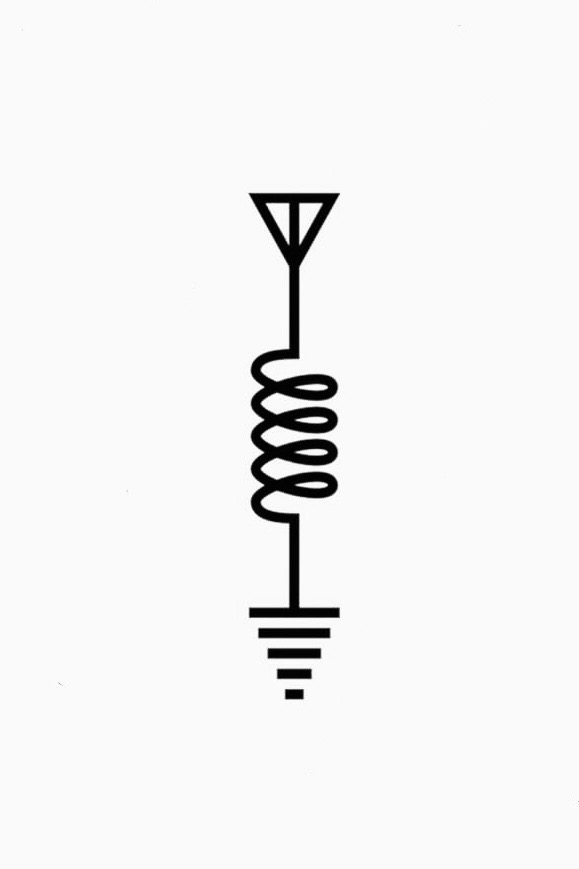- cross-posted to:
- greentext@lemmy.ml
- cross-posted to:
- greentext@lemmy.ml
Funny how nuclear power plants are taboo, but building thousands of nuclear warheads all over the globe is no issue.
Funny how building nuclear power plants that can only (if you have dipshits running them) kill a nearby city is taboo, but climate change that will kill everyone is acceptable to the moralists.
Funny how whataboutism makes your audience defensive.
Funny how being polite didn’t convince you so now you’re trying to sell that being mean is going to stop you. You were always useless.
The problem isn’t that they exploded one time. The problem is that that one explosion is still happening and likely will be for quite a while.
On the other hand, modern rock exploding plant designs are so much better that it’s very unlikely to repeat itself, so there’s that.
I’m sure the other rock/liquid/gas burning plants have had no issues along their lifetime and had no hand in demonizing the “new” slowly exploding rock technology after extreme negligence let the one big one happen. /s
I’d take the band aid of nuclear in my backyard vs what we rely on now after learning all of the insider knowledge of someone who personally worked in energy generation that did all of this plus renewables almost their entire professional life.
Paraphrased but this is right.
And the people were taught to talk about the horrible nuclear accidents that killed a few but completely glance over the unimaginable millions perished in the name of oil, mustn’t even mention the mass extinction events we launched with oil.
We even spread exaggerated bullshit about radiation mutation (wtf? thats superhero comic books fiction!!) and cancer rates (only one really), ignoring how much overwhelmingly more of the both we get from fossil fuel products.
We are like prehistoric people going extinct bcs of the tales how generations ago someone burned down their house so fire bad. Well, actually not like that - we are taking with us a lot of species & entire ecosystems too.
It’s more like “Bob and Jim died in a fire a while ago, so everyone decided to put up with heaps of people dying to hypothermia and uncooked meat”
The local undertaker family tells the story about Bob and Jim once a week to the whole village (attendance is mandatory).
“Ted Kennedy killed more people than Three Mile Island” - Bumper sticker.
That’s said, I facepalm at Fukushima. And desperately want more modern systems
You’re right to reject the logic behind that because it’s nonsense. Its not making sense to them because they still presume some kind of good faith when it come to these sorts of things.
The reason we haven’t built more nuclear power stations is because oil, gas and coal companies will make less money, if we build more nuclear power stations.
They have the means, the motive and they have a well recorded history of being that cartoonishly villainous. Nothing else makes sense.
It’s crazy that Mr. Burns from the Simpsons was in nuclear and not coal or oil. Probably a product of the propaganda at the time.
Three Mile Island and Chernobyl really did change things. Prior to those incidents there were plans to build over 50 more nuclear plants in place which got canceled as a result. Currently oil and gas industries will do all they can to keep nuclear from making a come back, but for a long time they didn’t have to do shit thanks to those catastrophes.
They didn’t have to but they did anyway.
Not even a joke, that’s a very concise way to put the argument.
Except the retard didn’t just burn his house down, he burned thousands of people’s houses down in such a way that nobody could ever live there again, and came very close to burning down the whole continent in the same way.
(I’m still in favour of spicy rock steam)
Isn’t nuclear energy like super safe and have killed incredibly few people compared to all the other energy sources?
Or are you talking about destilling the magic rocks very much and putting them in a bomb?
Exactly.
The whole clusterfuck of mishandled Chernobyl cleanup & everything there before and after only claimed a few lives (via direct radiation tissue damage or just accidents).
Compare that with the daily average of thousands of killed in various (ultimately) oil wars.
But we don’t even get news about that.
But western propaganda sure showed us malformed babies & claimed it was from radiation - it turns out it was all bullshit, it was always a toxic chemical behind it (unregulated industries selling toxic shit by the tonnes - fertilisers, paints, even biological warfare).
We just take radiation super seriously and completely disregard toxic chemical pollution of eg industrial spillages. People just get to live in polluted areas and die sooner because of that. Instead of living for longer & with less health hazards but with a little radiation.
And lastly - burning coal released way more radiation into air than nuclear accidents.
Or to put it another way, we almost ruined a large swath of land and learned from that mistake, but chose not to use it so when we do have to switch to nukes because destroyed our planet we will have forgotten all those lessons and do it again.
Na it’s dumb. The issue with the magic rocks isn’t the direct consequences like with the fire. The issues with these rocks are long terms with the consequences on humans and the environment thousands of years later.
Yeah, the environmental issues that are orders of magnitude less problematic than literally pumping the toxic chemicals into the atmosphere like with fossil fuels, vs comparatively miniscule amount of solid waste to store inert.
Coal smoke is more radioactive than the outside of a fission reactor anyhow.
What consequences?
There are no consequences for animals in Chernobyl, they are thriving in all aspects, even mammals living underground (mutations are fiction).People that didn’t leave the exclusion zone died of old age there.
Life on Earth had to deal with all sorts of radiation.
What caused mass extinction was ecosystem change, eg via global climate change.
these rocks are long terms with the consequences on humans and the environment thousands of years later.
You bury them in concrete, done. Nuclear waste isn’t an issue and hasn’t ever been
Burning down your house doesn’t poison people thousands of years later, so it’s not a perfect analogy.
Plus we have magic mirrors and magic fans that do the same thing as the magic rocks just way cheaper.
We had magic mirrors and magic fans for centuries tho.
Yet we decided to release way more poison and even way more radiation by mining and burning fossil fuels. We just poison larger areas than any nuclear disasters. And with fossil fuels people actually get cancer, and with toxic byproducts, mutations and birth defects.
People in polluted areas die sooner. Except around nuclear disasters sights - the air gets cleaner once all the people are thrown out.
We’ve upgraded from burning our houses down to burning our atmosphere down which will absolutely poison humans for centuries to come. And since we now burn larger fires with black rocks, those release far more magic rock dust that poisons people than the magic rock water heaters do. Not to mention that fire has both killed more of us cave dwellers than magic rocks ever have (including the flying weaponry runes made from them) and have caused more ecological disasters, so fire is much worse.
Then we talk magic mirrors, they have evil rocks in them that get in our rivers and we don’t contain well. That aside, we show tradition to our ancestors by making much of them with slavery.
And the magic fans? The design is very human. They’d be a gift from the gods if only the spirit of the wind were always with us.
Summary: Magic rock still good, black rocks and black water make bad fire and hairless monkey make sick more.
This is exactly, factually right, and eloquently put using the same meme terminology people here understand.
I love the wording in here
One time? Wikipedia says over 100 serious incidents and lists about 30 of them. https://en.m.wikipedia.org/w/index.php?title=Nuclear_and_radiation_accidents_and_incidents&wprov=rarw1
It’s fine if you like nuclear, just don’t try and claim it was one time. It poses serious risk and should be treated as such.
Look up deaths per kWHr of different energy sources and come back to me
It has that low death rate precisely because it is heavily regulated.
The typical nuclear booster argument works on the following circular logic:
“Nuclear is perfectly safe.”
“But that’s not the problem with nuclear. The problem with nuclear is its too expensive.”
“Nuclear is expensive because it’s overly regulated!”
“But nuclear is only safe because of those heavy regulations!”
“We would have everything powered by nuclear by now if it weren’t for Greenpeace.”
That’s not my point and I’m already aware.
The house burning probably happened more than one time too.
The alternative is not necessarily oil.
It feels like it is otherwise we wouldn’t possibly use it.
Imagine dangerous drilling, all the complex refining, the mass transpiration systems around the world moving billions of tonnes, etc. It’s stupid and complex. The system to enable it was somewhat forced & def forced to maintain it, it’s well documented actually.
Most of those didn’t involve the magic rocks, and most didn’t hurt anyone.
More people die creating the building materials for a powerplant (or a windmills, or a solar panel) than ever during operation. The numbers really don’t matter.
I honestly don’t care what we do, as long as we stop burning coal, oil and gas. The way I see it, every nuclear plant and windmill means we all die a little later.
Just put it somewhere noone lives like the Dakotas or places people who don’t matter live, like west Virginia. All the coal miners getting cancer anyway, why not double tap?
Low blow on West Virginia. Cool state and nice people. Hoping to move there someday.
The coal mining industry employs about 38,000 people. Dunkin Donuts alone employs seven times as many people as the whole coal mining industry. There just aren’t that many coal miners anymore. And everyone currently involved with it joined up knowing full well the days of coal were numbered.
Well, you see, the “Anti Magic Rock” Lobby has immense amount of power because of the money of the still lucrative “burning stuff and pollute everything” business.
It’s the “Burning other magic rocks” party.
That, and the green parties (at least in EU).
Yeah, oil oiled the “green” anti-nuclear protests.
You can tell that’s how it was because the cops didn’t beat them as much (or in some big cases at all) as they do even the most insignificant anti-oil protesters.
The “green” parties 💵💵
Step 1: Get magic rocks.
Step 2: Now design the rest of the nuclear reactor.
Step 3: ???
Step 4: Profit.
yes
I always wonder where we would actually be at as a civilization if it weren’t for fuckass lobbyists and money hoarding greedy assholes. This is a perfect example. If we’d learned from our mistakes and actually improved on nuclear energy there’s no telling where we’d be at this point.
But the profits!
“Right in the heart of it is an itty bitty windmill and that just don’t sit right with me” - That one cousin at Thanksgiving
arent we out of uranium by 2040 anyway? op can have our “nucular” waste anytime. why even waste time on a resource that we cant use in 15 yrs from now? super stupid.
-
No
-
Because #1 is no
-
Hand them over, I can still use those Uranium rods as dildos.
For huge countries as like the US: Maybe. You have enough space to also store the trash somewhere for thousands of years.
For small countries, like most of Europe, where the population density is way higher: hard pass.
Those same countries that found space for all the rest of their industrial waste?
Nuclear waste has a tiny footprint. Fence off a couple square km for security, dig a small but deep hole, and there ya go.
Obviously oversimplifying, but the point is that nuclear waste is a tiny issue. The entire world’s waste could be stored in a single warehouse if we wanted to (we don’t).
Storage isn’t that much of a problem, even in smol Europe countries.
Also it’s contained in specific areas, some nerds are bound to wanna reuse what we now think of as trash/spent fuel. If it’s still radioactive after it just means it radiates energy, we just didn’t commercially learned how to harness it. There are ongoing studies into that too.
And radiation isn’t as problematic as we are taught by media - humans lived in Chernobyl exclusion zone until death by old age, mammals there are thriving. The dangers of radiation are immediate tissue damage or thyroid cancer (again via tissue damage) if iodine isn’t taken by exposed people.
iirc nuclear waste isn’t really that big of an issue anymore, they just drill a really deep hole that’s like a foot across and nobody will ever see it again
Slow, expensive, riddeled with corruption, long ago surpassed by renewables. Why should we use it?
Renewables once surpassed fossil fuels, until some brave knight killed all the windmills.
only antimatter could provide more energy density, it’s insanely powerful.
produces amounts of waste orders of magnitude lower than any other means of energy production
reliable when done well
it shouldn’t be replaced with renewables, but work with them
Who gives a fuck about energy density beyond some physics nerds? Unless you’re planning on building a flying nuclear-powered airplane, energy density is irrelevant. This is why solar is eating fission’s lunch.
only antimatter could provide more energy density, it’s insanely powerful.
Nuclear energy indeed has very high energy per mass of fuel. But so what? Solar and wind power doesn’t even use fuel. So the energy density thing is a bit of a distraction.
just compare 1 ton of fissile fuel and 1 ton of Silicon or steel. how much power do you get out of it ?
Who cares? We use economics to sort out the relative value of radically different power sources, not cherry-picked criteria. Fission boosters can say that nuclear has a small footprint. Solar boosters can say that solar has no moving parts and is thus more mechanically reliable. Fission boosters can say fission gets more power from the same mass. Solar boosters can point to the mass of the entire fission plant, including the giant concrete dome that needs to be strong enough to survive a jumbo jet flying into it.
In the end, none of this shit matters. We have a way of sorting out these complex multi-variable problems. Both fission and solar have their own relatives strengths and weaknesses that their proponents can cherry pick. But ultimately, all that matters in choosing what to deploy is cost.
And today, in the real world, in the year 2024, if you want to get low-carbon power on the grid, the most cost-effective way, by far, is solar. And you can add batteries as needed for intermittency, and you’re still way ahead of nuclear cost-wise. And as our use of solar continues to climb, we can deploy seasonal storage, which we have many, many options to deploy.
The ultimate problem fission has is that it just can’t survive in a capitalist economy. It can survive in planned economies like the Soviet Union or modern China, or it can run as a state-backed enterprise like modern Russia. But it simply isn’t cost effective enough for fission companies to be able to survive on their own in a capitalist economy.
And frankly, if we’re going to have the government subsidize things, I would much rather the money be spent on healthcare, housing, or education. A lot of fission boosters like fission simply because they think the tech is cool, not necessarily because it actually makes economic sense. I say that if fission boosters want to fund their hobby and subsidize fission plants, let them. But otherwise I am adamantly opposed to any form of subsidies for the fission industry.
What are you trying to say here? Are we still talking about fuel types here?
Again, let me point out that solar power does not consume any fuel. The materials used to construct the solar panels are not having any power extracted from them. And secondly, nuclear power plants require construction materials too. … So I really don’t know what kind of comparison you are asking for here.
But it’s not done well. Just look at the new built plants, which are way over budget and take way longer to build then expected. Like the two units in Georgia that went from estimated 14bn to finally 34bn $. In France who are really experienced with nuclear, they began building their latest plant in 2007 and it’s still not operational, also it went from 3.3bn to 13.2bn €. Or look at the way Hinkley Point C in the UK is getting developed. What a shit show: from estimated 18bn£ to now 47bn£ and a day where it starts producing energy not in sight.
The same problems faced the oil industry too, with their drilling rigs & refineries (over budget and over schedule, with gov money grants and subsidies), it’s just less in the media & more spread out (more projects).
Also 10s of billions is still insignificant for any power, transport, or healthcare infrastructure in the scheme of things - we have the money, we just don’t tax profit enough. And we don’t talk about how the whole budget gets spent (private or public), where all the money actually goes, instead we get the highlighted cases everyone talks about. But not about the shielded industries when they fuck up.
Also 10s of billions is still insignificant for any power, transport, or healthcare infrastructure in the scheme of things -
Bullshit. If you can get the same amount of reliable power by just slapping up some solar panels, wind turbines, and batteries, then obviously the cost is not insignificant.
That sentence shows that you really aren’t thinking about this as a practical means of power generation. I’ve found that most fission boosters don’t so much like actual nuclear power, but the idea of nuclear power. It appeals to a certain kind of nerd who admires it from a physics and engineering perspective. And while it is cool technically, this tends to blind people to the actual cold realities of fission power.
There’s also a lot of conspiratorial thinking among the pro-nuclear crowd. They’ll blame nuclear’s failures on the superstitious fear of the unwashed ignorant masses or the evil machinations of groups like Greenpeace. Then, at the same time, they’ll ignore the most bone-headedly obvious cause of nuclear’s failure: it’s just too fucking expensive.
Do you know WHY they went over budget?
That’s for the nuclear industry to figure out. But the fact that companies from different companies originating in entirely different countries suggest that it’s a problem with the tech itself.
The hard truth many just don’t want to admit is that there are some technologies that simply aren’t practical, regardless of how objectively cool they might be. The truth is that the nuclear industry just has a very poor track record with being financially viable. It’s only ever really been scaled through massive state-run enterprises that can operate unprofitably. Before solar and wind really took off, the case could be made that we should switch to fission, even if it is more expensive, due to climate concerns. But now that solar + batteries are massively cheaper than nuclear? It’s ridiculous to spend state money building these giant white elephants when we could just slap up some more solar panels instead. We ain’t running out of space to put them any time soon.
Yes, but energy density doesn’t matter for most applications and the waste it produces is highly problematic.
85% of used fuel rods can be recycled to new fuel rods. And there’s military uses for depleted uranium too. So, essentially every bit of the waste can be recycled. Can’t say the same for fossil fuels.
“85% of used fuel rods can be recycled” is like “We can totally capture nearly all the carbon from burning fossil fuels and then remove the rest from the atmosphere by other means”.
In theory it’s correct. In reality it’s bullshit that will never happen because it’s completely uneconomical and it’s just used as an excuse to not use the affordable technology we already have available and keep burning fossil fuels.
Capturing all the extra carbon from the atmosphere is not as expensive as it sounds like. It can easily be done by a few rich countries in very few decades once we stop adding more there every day.
Recycling nuclear waste is one of those problems that should be easy but nobody knows what the easy way looks like. It’s impossible to tell if some breakthrough will make it viable tomorrow or if people will have to work for 200 years to get to it. But yeah, currently it’s best described as “impossible”.
Capturing all the extra carbon from the atmosphere is not as expensive as it sounds like. It can easily be done by a few rich countries in very few decades once we stop adding more there every day.
What?
For starters, carbon capture takes an insane amount of power. And to follow up: we couldn’t even build the facilities is “a few decades” even if we free power and infinite money.
Yep, “insane amounts” of power like you what you get by investing something like 1% of a few countries’ GDP in PV panels.
Yeah, you’re not making any sense. How is the recyclability of nuclear fuel rods an excuse to keep burning fossil fuels? That’s a massive leap in logic that demands an explanation.
They’re saying that plausible uses don’t necessarily translate to real world use, in practice. I have no stake in this, just translating
While I understand where they’re coming from, it should be noted that they’re likely basing their experience with recyclability on plastic recycling which is totally a shit show. The big difference comes in when you realize that plastic is cheap as shit whereas uranium fuel rods are not.
the waste it produces is highly problematic.
It’s a solved problem. https://www.youtube.com/watch?v=4aUODXeAM-k https://www.youtube.com/watch?v=lhHHbgIy9jU
If something is Nuclear enough it can generate heat, its just the reactors make use of an actual reaction that nuclear waste can’t do anymore. Yever watch the Martian, he has a generator that’s fuel is lead covered beads of radioactive material, it doesn’t generate as much as reactors but it’s still a usable amount.
If something is Nuclear enough it can generate heat
That’s an extreme oversimplification. RTGs don’t use nuclear waste. Spent reactor fuel still emits a large amount of gamma and neutron radiation, but not with enough intensity to be useful in a reactor. The amount of shielding required makes any kind of non-terrestrial application impossible.
The most common RTG fuel is plutonium (238Pu, usually as PuO2), which emits mostly alpha and beta particles, and can be used with minimal shielding. It can’t be produced by reprocessing spent reactor fuel. In 2024, only Russia is manufacturing it. Polonium (210Po) is also an excellent fuel with a very high energy density, but it has a prohibitively short half-life of just over a hundred days. It also has to be manufactured and can’t be extracted.
90Sr (strontium) can be extracted from nuclear fuel, and was used by early Soviet RTGs, but only terrestrially because the gamma emission requires heavy shielding. Strontium is also a very reactive alkaline metal. It isn’t used as RTG fuel today.
Right now we probably use more energy to produce antimatter than getting it back
certainly
Energy density is a useless bullshit metric for stationary power.
Produces more waste than almost all of the renewables.
Reliable compared to… … … ok, I’m out of ideas, they need shutdowns all the time. Seems to me it’s less reliable than anything that isn’t considered “experimental”.
And it can’t work with renewables unless you add lots and lots of batteries. Any amount of renewables you build just makes nuclear more expensive.
They are an interesting technology, and I’m sure they have more uses than making nuclear weapons. It’s just that everybody focus on that one use, and whatever other uses they have, mainstream grid-electricity generation is not it.
Not sure I get what you mean by “slow”.
And it’s not entirely shocking that we have more of the power source we’ve been building and less of the one we stopped building.
Sometimes the sun doesn’t shine, sometimes the wind doesn’t blow. Renewables are great and cheap, but they aren’t a complete solution without grid level storage that doesn’t really exist yet.
Solar with Battery grid storage is now cheaper than nuclear.
If the demand goes up I have some doubt, also, mining for Lithium is far from being clean, and then batteries are becoming wastes, so I doubt you would replace nuclear power with this solution
I guess in some regions it could work, but you’re still depending on the weather
You don’t need lithium. That’s just the story told to have an argument why renewables are allegedly bad for the environment.
Lithium is fine for handhelds or cars (everywhere where you need the maximum energy density). Grid level storage however doesn’t care if the building houising the batteries weighs 15% more. On the contrary there are a lot of other battery materials better suited because lithium batteries also come with a lot of drawback (heat and quicker degradation being the main ones here).
PS: And the materials can also be recycled. Funnily there’s always the pro-nuclear argument coming up then you can recycle waste to create new fuel rod (although it’s never actually done), yet with battery tech the exact same argument is then ignored.
Density doesn’t matter much when it comes to grid scale, indeed.
What battery technologies are you thinking of? Zinc-ion? Flow batteries?
They’re currently bringing sodium batteries to market (as in “the first vendor is selling them right now”). They’re bulky but fairly robust IIRC and they don’t need lithium.
you know that grid storage does not always mean “a huge battery”, you can also just pump water in a higher basin oder push carts up a hill and release the potential energy when you need it…
Pumped storage is a thing yeah. But might just as well go full hydro, if you’re doing the engineering anyways.
I feel like we’re missing the part about “push carts up a hill”, which involves virtually no serious engineering difficulties aside from “which hill” and “let’s make sure the tracks run smoothly”. See: the ARES project in Nevada
Yeah, that’s 50MW, storing power for 15 minutes, so 20MWh. (1).
There’s also a similar company: gravicity.
They’re a fun academic endeavour. But if gravity provides the potential, water beats them per dollar spend. It’s not even close.
So do regular batteries.
Yeah, lithium mining and processing is extremely toxic and destructive to the environment. On one hand, it’s primarily limited to a smaller area, but on the other hand, is it sustainable long-term unless a highly efficient lithium recycling technology emerges? And yes, I know there are some startups that are trying to solve the recycling problem, some that are promising.
Would love to see a source for that claim. How many 9’s uptime do they target? 90%, 99%
This is old news now! Here’s a link from 5 years ago. https://www.forbes.com/sites/jeffmcmahon/2019/07/01/new-solar--battery-price-crushes-fossil-fuels-buries-nuclear/
This is from last year: https://www.lazard.com/research-insights/2023-levelized-cost-of-energyplus/
As to uptime, they have the same legal requirements as all utilities.
I was pro nuke until finding out solar plus grid battery was cheaper.
Source (1)
Later this month the LA Board of Water and Power Commissioners is expected to approve a 25-year contract that will serve 7 percent of the city’s electricity demand at 1.997¢/kwh for solar energy and 1.3¢ for power from batteries.
The project is 1 GW of solar, 500MW of storage. They don’t specify storage capacity (MWh). The source provides two contradicting statements towards their ability to provide stable supply: (a)
“The solar is inherently variable, and the battery is able to take a portion of that solar from that facility, the portion that’s variable, which is usually the top tend of it, take all of that, strip that off and then store it into the battery, so the facility can provide a constant output to the grid”
And (b)
The Eland Project will not rid Los Angeles of natural gas, however. The city will still depend on gas and hydro to supply its overnight power.
Source (2) researches “Levelized cost of energy”, a term they define as
Comparative LCOE analysis for various generation technologies on a $/MWh basis, including sensitivities for U.S. federal tax subsidies, fuel prices, carbon pricing and cost of capital
It looks at the cost of power generation. Nowhere does it state the cost of reaching 90% uptime with renewables + battery. Or 99% uptime with renewables + battery. The document doesn’t mention uptime, at all. Only generation, independant of demand.
To the best of my understanding, these sources don’t support the claim that renewables + battery storage are costeffective technologies for a balanced electric grid.
It looks at the cost of power generation
Yes.
But then you added the requirement of 90% uptime which is isn’t how a grid works. For example a coal generator only has 85% uptime yet your power isn’t out 4 hours a day every day.
Nuclear reactors are out of service every 18-24 months for refueling. Yet you don’t lose power for days because the plant has typically two reactors and the grid is designed for those outages.
So the only issue is cost per megawatt. You need 2 reactors for nuclear to be reliable. That’s part of the cost. You need extra bess to be reliable. That’s part of the cost.
Uptime is calculated by kWh, I.E How many kilowatts of power you can produce for how many hours.
So it’s flexible. If you have 4kw of battery, you can produce 1kw for 4hrs, or 2kw for 2hrs, 4kw for 1hr, etc.
Nuclear is steady state. If the reactor can generate 1gw, it can only generate 1gw, but for 24hrs.
So to match a 1gw nuclear plant, you need around 12gw of of storage, and
13gw2gw of production.This has come up before. See this comment where I break down the most recent utility scale nuclear and solar deployments in the US. The comentor above is right, and that doesn’t take into account huge strides in solar and battery tech we are currently making.
The 2 most recent reactors built in the US, the Vogtle reactors 3 and 4 in Georgia, took 14 years at 34 billion dollars. They produce 2.4GW of power together.
For comparison, a 1 GW solar/battery plant opened in nevada this year. It took 2 years from funding to finished construction, and cost 2 billion dollars.
So each 1.2GW reactor works out to be 17bil. Time to build still looks like 14 years, as both were started on the same time frame, and only one is fully online now, but we will give it a pass. You could argue it took 18 years, as that’s when the first proposals for the plants were formally submitted, but I only took into account financing/build time, so let’s sick with 14.
For 17bil in nuclear, you get 1.2GW production and 1.2GW “storage” for 24hrs.
So for 17bil in solar/battery, you get 4.8GW production, and 2.85gw storage for 4hrs. Having that huge storage in batteries is more flexible than nuclear, so you can provide that 2.85gw for 4 hr, or 1.425 for 8hrs, or 712MW for 16hrs. If we are kind to solar and say the sun is down for 12hrs out of every 24, that means the storage lines up with nuclear.
The solar also goes up much, much faster. I don’t think a 7.5x larger solar array will take 7.5x longer to build, as it’s mostly parallel action. I would expect maybe 6 years instead of 2.
So, worst case, instead of nuclear, for the same cost you can build solar+ battery farms that produces 4x the power, have the same steady baseline power as nuclear, that will take 1/2 as long to build.
Uptime is calculated by kWh, I.E How many kilowatts of power you can produce for how many hours.
That’s stored energy. For example: a 5 MWh battery can provide 5 hours of power at 1MW. It can provide 2 hours of power, at 2.5MW. It can provide 1 hour of power, at 5MW.
The max amount of power a battery can deliver (MW), and the max amount of storage (MWh) are independant characteristics. The first is usually limited by cooling and transfo physics. The latter usually by the amount of lithium/zinc/redox of choice.
What uptime refers to is: how many hours a year, does supply match or outperform demand, compared to the number of hours a year.
So to match a 1gw nuclear plant, you need around 12gw of of storage, and 13gw of production.
This is incorrect. Under the assumption that nuclear plants are steady state, (which they aren’t).
To match a 1GW nuclear plant, for one day, you need a fully charged 1GW battery, with a capacity of 24GWh.
Are you sure you understand the difference between W and Wh?
My math assumes the sun shines for 12 hours/day, so you don’t need 24 hours storage since you produce power for 12 of it.
My math is drastically off though. I ignored the 12 hrs time line when talking about generation.
Assuming that 12 hours of sun, you just need 2Gw solar production and 12Gw of battery to supply 1Gw during the day of solar, and 1Gw during the night of solar, to match a 1Gw nuclear plants output and “storage.”
Seeing as those recent projects put that nuclear output at 17 bil dollars and a 14 year build timeline, and they put the solar equivalent at roughly 14 billion(2 billion for solar and 12 billion for storage) with a 2 - 6 year build timeline, nuclear cannot complete with current solar/battery tech, much less advancing solar/battery tech.
https://www.theguardian.com/environment/2024/oct/24/power-grid-battery-capacity-growth
US power grid added battery equivalent of 20 nuclear reactors in past four years
Thats a chicken/egg peoblem. If enough renewables are build the storage follows. In a perfect world goverments would incentivice storage but in an imperfect one problems have to occure before somebody does something to solve them. Anyway, according to lazard renewables + storage are still cheaper than NPPs.
Imagine this (not so) hypothetical scenario:
Yellowstone or another supervolcano erupts and leads to a few years of volcanic winter, where there is much less sunshine. This has historical precedent, it has happened before, and while in and of itself it will impact a lot of people regardless of anything else, wouldn’t you agree it would be better to have at least some nuclear power capacity instead of relying solely on renewables?
Sure, such a scenario is not probable, but it pays to stay safe in the case of one such event. I would say having most of our power from renewables would be best, having it supported by 10-20% or so nuclear with the possibility of increase in times of need would make our electric grids super resilient to stuff
Yeah let me imagine a supervolcano explosion of that scale to effect global weather patterns. What do you think will happen to your reactors? No, they are not indestructable just because they can handle an earthquake of normally expected proportion.
Nature catastrophes are the top 1 danger to nuclear energy. See Fukushima.
And the real question here would be a comparison between risk of a nuclear accident event and a renewables-impacting climate event.
Let’s be clear, the only reason grid-level storage for renewables “doesn’t exist” is because of a lack of education about (and especially commitment to) simple, reliable, non-battery energy storage such as gravitational potential, like the ARES project. We’ve been using gravitational potential storage to power our mechanisms since Huygens invented the freaking pendulum clock. There is simply no excuse other than corruption for the fact that we don’t just run a couple trains up a hill when we need to store massive amounts of solar energy.
There is simply no excuse other than corruption for the fact that we don’t just run a couple trains up a hill when we need to store massive amounts of solar energy.
How about basic maths? I
Scale is a huge fucking issue. The little country of the Netherlands, where I happen to live, uses 2600 petajoule per day. So let’s store 1 day of power, at 100% efficiency, using the tallest Alp (the Mont Blanc).
Let’s round up to 5000 meters of elevation. We need to store 2.6e18 joules, and 1 joule is 100 grams going up 1 meter. So to power a tiny little country, we need to lift roughly 5e13 kilos up the Mont Blanc. To visualize, that’s 1.7 billion 40ft shipping containers, or roughly 100 per inhabitant.
Using 555m blocks of granite, you’d need 166 million of them (9 for every person in the country). Assuming a 2% slope, you’d need to build a 250.000m long railway line. And if you lined all those blocks up, with no space in between, you’d need 3328 of those lines (which then couldn’t move, because they fill the entire space between the summit and sea level).
And that’s just 1 small country.
And hey, you know what, that’s almost got a point. Firstly, I’m in the US, and I’ll freely admit that my comment was highly US-normative. However, I believe my comment on government corruption stands for the US case, where there is an insane amount of space that is already partly-developed in random bits of desert.
Now, let’s get into your claims against the Netherlands case, aside from the ad-hominem of your incredibly condescending tone. Let’s do some “basic fucking maths”, thou king of Numenor:
- Unless the IEA is very, VERY wrong, your claim that the Netherlands consumes “2600 petajoule per day” is INSANELY high. Every statistic I can find shows electricity consumption being between 113 [2] and 121 [1] Terawatt-hours per annum. Let’s divide that larger value by 365 (assuming uniform seasonal demand), then convert that into joules, and we get 1.19 Petajoules per day. more than a THOUSAND times smaller than your number.
- Secondly, this “just 1 small country” bit is spurious, since your “small country” is the 33rd-greatest electricity consumer in the world for the 77th highest population [2]
- The assumption that you must store an entire day’s worth of energy demand is ludicrous. Let’s be generous and assume that you have to store 50% of the day’s energy demand, despite the fact that the off-hours are during the night, when electricity demands fall off.
- Next, let us point out that we don’t need to abandon literally every other method of energy generation. From wind energy to, yes, nuclear, the Netherlands is doing quite well for itself outside of solar. Let’s assume that we need to cover all of the electricity that is currently produced using coal, oil and natural gas. All other sources already have infrastructure supporting them, including the pre-existing solar. This amount comes to about 48% [1], so let’s assume 50%.
- Now, we need to cover 50% of 50% of 1.9 petajoules at any one time, or 475 gigajoules, at any one time.
- Because I neither want nor need your supposedly-charitable assumptions, let’s use the actual numbers from ARES in Nevada:
- Their facility’s mass cars total 75000 tons in freedom units, or about 68040000 kg. [3]
- They claim 90+% efficiency round-trip [4], but let’s assume that your condescending tone has made the train cars sad, so they’re having a bad day, and only run at 80% efficiency, despite the fact that we’ve known how to convert to and from GPE with insane efficiency ever since Huygens invented the fucking pendulum clock.
- Now, is this perfect for everywhere? Of course not. Not everywhere has the open space necessary. The ARES site requires a straight shot about 5 miles long, but they managed to find one that, in that distance, drops 2000 feet (~610 m) [5]
- Now, let’s do the math together: 475000000000J / 10m/s^2 / 68040000kg / 80% Efficiency = 880m total elevation needed
- Thus, unless my math is quite off, we would only need 2 of the little proof-of-concept ARES stations running at 80% efficiency to more than cover the energy storage needs required for your country to completely divest from fossil fuels and go all-in on solar for the remainder of your needs.
Quod Erat Fucking Demonstrandum.
[1] https://www.iea.org/countries/the-netherlands [2] https://en.wikipedia.org/wiki/List_of_countries_by_electricity_consumption [3] https://aresnorthamerica.com/nevada-project/ [4] https://aresnorthamerica.com/gravityline/ [5] https://energy.nv.gov/uploadedFiles/energynvgov/content/Programs/4 - ARES.pdf
ETA: the F in QEFD, as well as rectify a quote (“just 1 small country”)
You go on thinking renewables are ever going to replace fossil fuel while we charge full tilt to our doom
Hey now, someone who knows almost nothing is just asking questions here.
You are saying we should be kinder to the less fortunate & uneducated?
That’s a nice thought.
This argument again?
Yes, it’s called reality. I know it’s an ugly thing that just doesn’t go away no matter how hard you want it to.
Reality can be anything anyone says, you just gotta believe it really hard?
And then repeat the
liereality in service to the ones than benefit from it. Gooboi.Dude, thorium reactors will be ready any day now, along with mini reactors! Everything will be super cheap and all the waste will be reused and we won’t be dependent on any fuel sources from Russia and all our problems will be gone!
/s, in case it’s not obvious
Anon is so dense that he will surpass the Poincaré recurrence time of the Universe, and will exist forever. This also means that for every iteration of the current universe he passes through, another iteration of anon will be produced, such that there will eventually be enough idiot anons to form its own entire universe.
Anon is infinitely and eternally stupid.



















